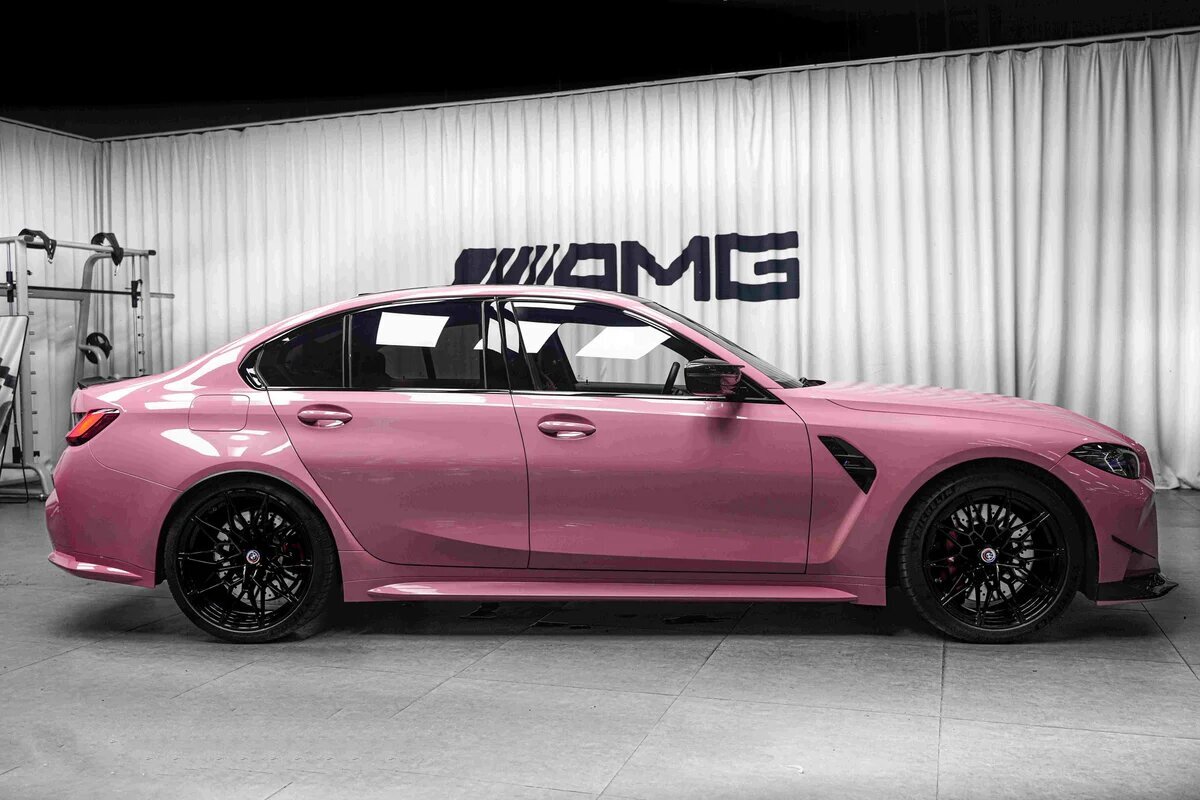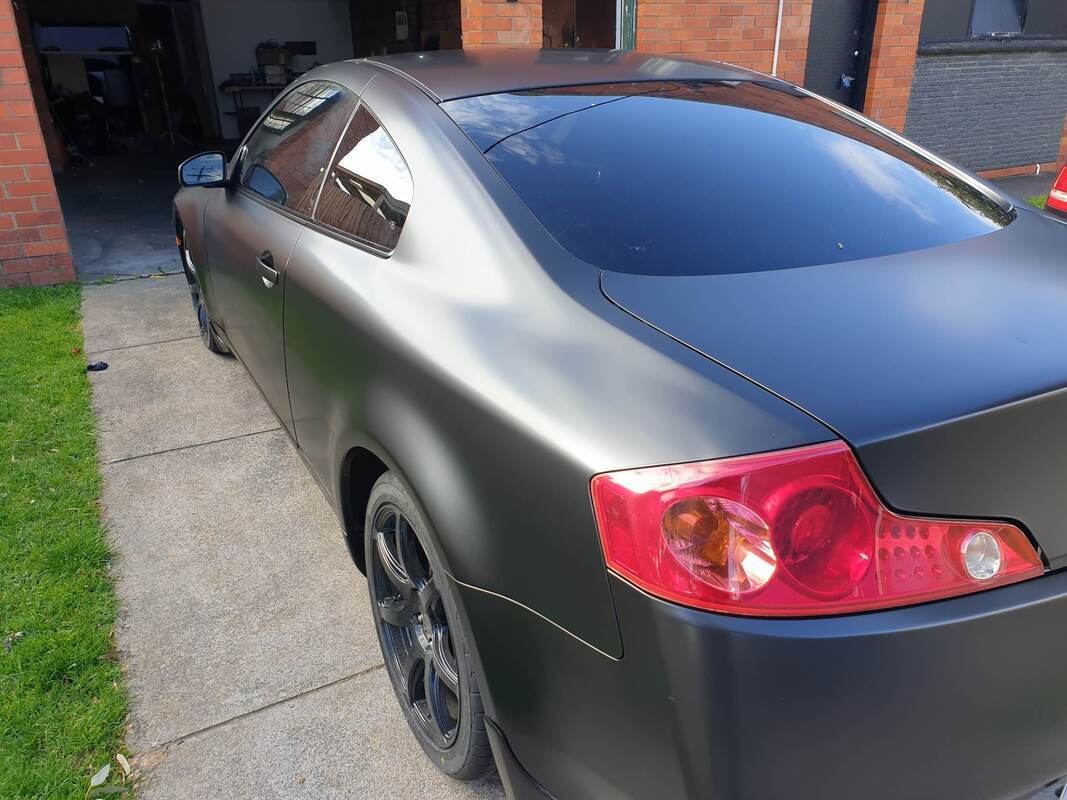Many people see vehicles changing color yet wonder which wrapping technique enables this effect. Two main finishing techniques exist for car transformations: liquid wraps and vinyl wraps. Both are popular car wrapping options, but they work in very different ways. Choosing between them means thinking about cost, look, and how long it lasts. Some drivers want a temporary color change. Others want full car protection wrap that looks shiny and new. This guide explains everything simply so you can decide what fits your needs best.

What Is Liquid Wrap?
It is also called Plasti Dip by many people. It’s a thick liquid that you spray onto your car like paint. After drying, it turns into a rubber-like skin. That rubber layer peels off easily whenever you want a change. People use liquid wrap for cars UK wide to try new colors without any long-term commitment. It's fun, easy to apply, and less expensive than other wraps. Car lovers who enjoy DIY often start with this kind of wrap.
What Is Vinyl Wrap?
It is a thin sheet made from strong plastic material. Installers place it on the surface of your car. Then they stretch it carefully to match the curves of each panel. A heat gun helps smooth the wrap and remove air bubbles. You can find many finishes like gloss, matte, chrome, or even textured styles. This kind of wrap looks very clean and sharp. The wrapping with vinyl vs paint is a common debate, but vinyl wins when you want flexibility and design options.
Key Differences: Liquid Wrap vs Vinyl Wrap
Let’s look at the major differences between these two wrapping options.
Application:
- Liquid wrap sprays onto the surface like regular paint. It creates one smooth layer.
- Vinyl wrap is made of sheets that you place, stretch, and trim to fit.
Appearance:
- Liquid wrap has fewer choices. It usually looks matte and may feel rubbery.
- Vinyl wrap comes in many styles and colors. It looks glossy and feels premium.
Durability:
- Liquid wrap lasts about 1 to 3 years if you care for it properly.
- Vinyl wrap can stay fresh for 5 to 7 years, even in bad weather.
Removability:
- Liquid wrap peels off easily by hand when you want a new color.
- Vinyl wrap needs heat and tools for safe removal without harming your paint.
Which One Offers Better Protection?
When it comes to car protection wrap, both options do the job to some extent. The protective layers shield both the underlying paint and protect it from scratching and block dust and dangerous ultraviolet rays. Based on superior material composition, the wrapping with vinyl offers better protection compared to traditional tougher materials. It can hold up better under rain, heat, and everyday wear. But on the other side, Plasti Dip is softer and may wear off faster under tough conditions. So, if you want strong, lasting protection, wrapping with vinyl is the safer choice.
Which One Lasts Longer?
This question often comes up: Which type stays on your car longer? The answer is vinyl wrap. When applied right and looked after, it lasts 5 to 7 years. You only need to clean it gently to keep it shiny. In contrast, a Plasti Dip lasts between 1 to 3 years. It may start peeling or fading if you leave it in the sun too long. That’s why many people choose wrapping with vinyl over paint when they want something strong but not permanent.
Which One Looks Better?
Looks matter a lot in car styling. And here, the winner is vinyl again. It offers a clean, smooth finish that looks like fresh paint. You can choose from many colors, designs, and textures to suit your taste. A Plasti Dip, while good for quick changes, does not offer the same variety. It usually has a plain matte look and may show streaks if sprayed unevenly. For a sharp, eye-catching result, the vinyl gives a better finish every time.

Cost Comparison
Price often helps people make a final decision. Let’s break it down simply.
- Liquid wrap is more budget-friendly. You might spend around £700 to £1,000, depending on your car. It’s cheaper because you can spray it yourself, and the materials cost less.
- Vinyl wrap costs more. It ranges from £2,000 to £4,000 in the UK. The price depends on the car size and wrap design. Also, expert installers charge more, but the result looks professional.
Even though liquid wrap for cars in the UK offers a cheaper start, vinyl gives better long-term value.
Verdict: Which Should You Choose?
Select the wrap style that fits both your budget and your desired look. The color-changing liquid option works well for people who need to save money and plan to use it for short periods. This product is equipped with fast installation procedures along with standard operational controls, yet it stays affordable.
But if you want a stronger wrap that lasts longer and looks amazing, go for a vinyl option. It offers better protection, more design choices, and a clean, professional finish. Also, many drivers find it worth the cost over time.
Still stuck between liquid wrap vs vinyl wrap? Think about how long you’ll keep your car in the same style. That simple question often helps people decide.
Looking to upgrade your vehicle’s look? TeckWrap UK offers stylish, long-lasting car wrapping options. Explore bold designs and premium finishes that work for every car type.
